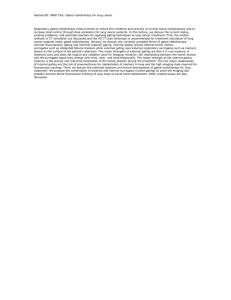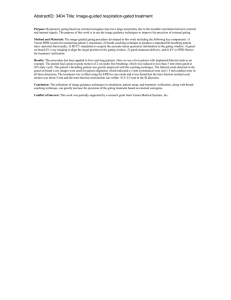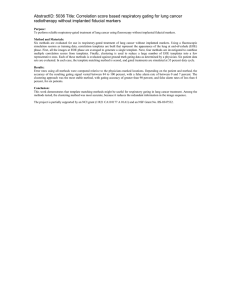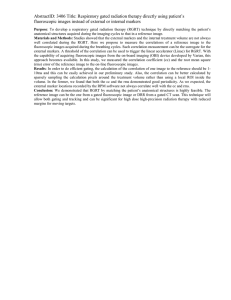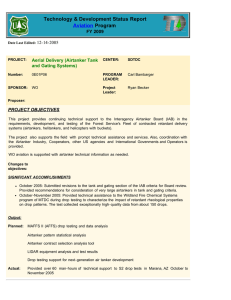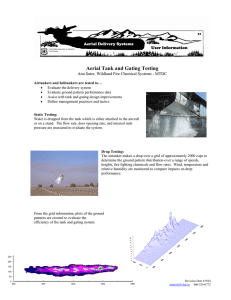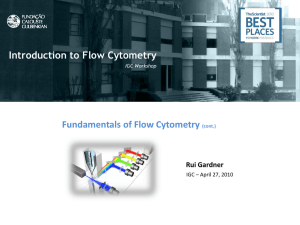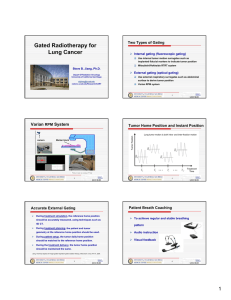AbstractID: 12018 Title: Gated radiotherapy for lung cancer
advertisement
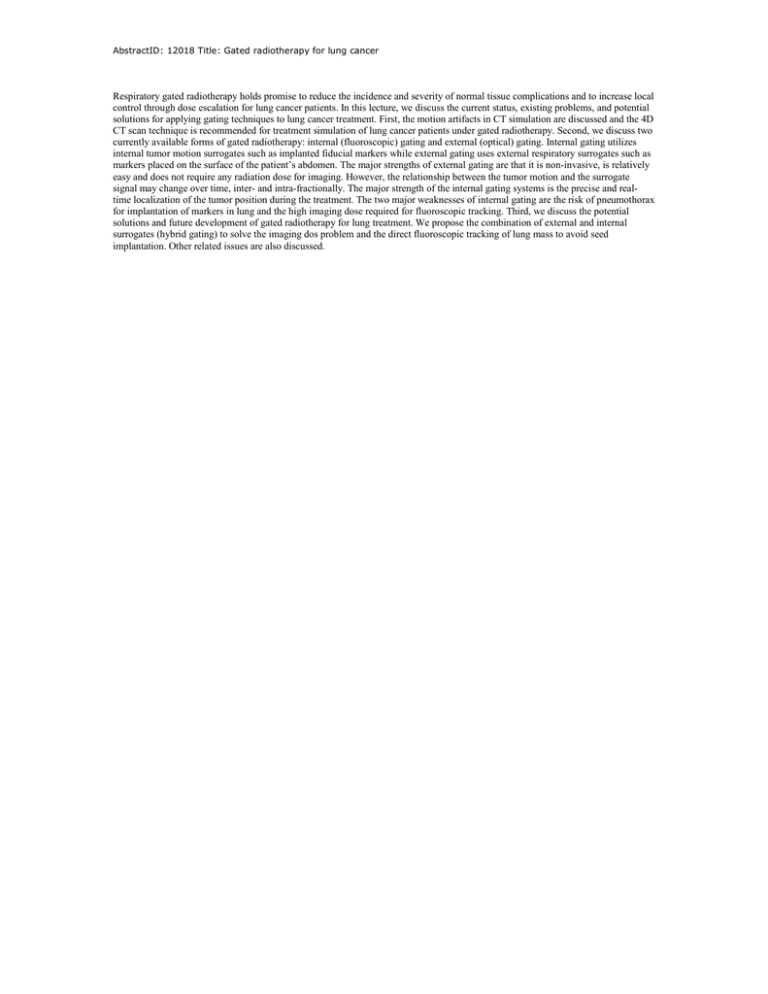
AbstractID: 12018 Title: Gated radiotherapy for lung cancer Respiratory gated radiotherapy holds promise to reduce the incidence and severity of normal tissue complications and to increase local control through dose escalation for lung cancer patients. In this lecture, we discuss the current status, existing problems, and potential solutions for applying gating techniques to lung cancer treatment. First, the motion artifacts in CT simulation are discussed and the 4D CT scan technique is recommended for treatment simulation of lung cancer patients under gated radiotherapy. Second, we discuss two currently available forms of gated radiotherapy: internal (fluoroscopic) gating and external (optical) gating. Internal gating utilizes internal tumor motion surrogates such as implanted fiducial markers while external gating uses external respiratory surrogates such as markers placed on the surface of the patient’s abdomen. The major strengths of external gating are that it is non-invasive, is relatively easy and does not require any radiation dose for imaging. However, the relationship between the tumor motion and the surrogate signal may change over time, inter- and intra-fractionally. The major strength of the internal gating systems is the precise and realtime localization of the tumor position during the treatment. The two major weaknesses of internal gating are the risk of pneumothorax for implantation of markers in lung and the high imaging dose required for fluoroscopic tracking. Third, we discuss the potential solutions and future development of gated radiotherapy for lung treatment. We propose the combination of external and internal surrogates (hybrid gating) to solve the imaging dos problem and the direct fluoroscopic tracking of lung mass to avoid seed implantation. Other related issues are also discussed.
